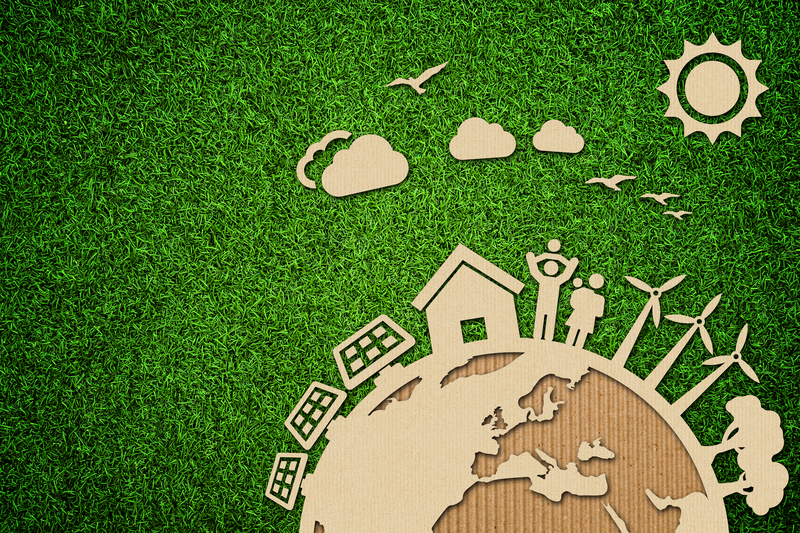Introduction to Efficient Eco-Friendly Home Design Solutions
In today's rapidly evolving world, the concept of green living has gained significant traction. As environmental concerns continue to grow, more homeowners are seeking sustainable and eco-friendly home design solutions to reduce their carbon footprint. This article explores various efficient strategies to design sustainable homes, which not only benefit the environment but also promote health and financial savings.
Key Principles of Sustainable Home Design
Implementing eco-friendly features into home design involves several key principles. By adhering to these guidelines, homeowners can create energy-efficient living spaces that harmonize with the natural environment.
1. Passive Solar Design
Harnessing the sun's energy can significantly reduce heating costs. Passive solar design involves the strategic placement of windows and thermal mass, such as concrete or tile, to capture and retain solar energy. This natural heating and illumination method reduces reliance on artificial sources.
2. Energy-Efficient Appliances
- Invest in appliances with an Energy Star rating.
- Consider energy-efficient HVAC systems for climate control.
- Opt for LED or CFL lighting to reduce electricity consumption.
Modern technologies have enabled the creation of appliances that consume less power while providing optimal performance. By incorporating energy-efficient appliances, homeowners can enjoy a lower energy bill and reduced environmental impact.
3. Sustainable Building Materials
Selecting environmentally friendly building materials is crucial. Options include:
- Reclaimed wood for rustic yet elegant finishes.
- Bamboo flooring, known for its durability and rapid renewability.
- Natural stone, a durable and sustainable choice for countertops and flooring.
These materials are not only sustainable but also add unique aesthetic appeal to any home design.

Water Conservation Techniques
Water is a precious resource, and conserving it is a vital part of designing an eco-friendly home. Implement the following solutions for effective water conservation:
1. Green Plumbing Systems
Opt for low-flow fixtures such as toilets, showerheads, and faucets. These devices use significantly less water without compromising performance.
2. Rainwater Harvesting
Rainwater harvesting systems collect rainwater from roofs and store it for later use. This method can be used for irrigation, flushing toilets, and even as a potable water source with proper treatment.
3. Xeriscaping
For exterior design, consider xeriscaping, a landscaping method that reduces or eliminates the need for irrigation. Use drought-resistant plants and incorporate mulch to retain soil moisture.
Innovative Insulation Techniques
Proper insulation is key to maintaining a consistent indoor temperature and reducing energy consumption. Here are several innovative insulation solutions:
- Spray Foam Insulation: Provides an airtight seal and excellent thermal resistance.
- Recycled Denim Insulation: A non-toxic alternative made from recycled materials.
- Sheep's Wool Insulation: A renewable resource that offers superior insulation properties.
Choosing the right insulation can significantly impact energy efficiency and the overall environmental footprint of the home.
Embracing Renewable Energy
Renewable energy sources such as solar and wind are pivotal in creating an eco-friendly home. Incorporating these systems can lead to self-sufficient energy generation.
1. Solar Panels
Solar panels capture sunlight and convert it into electricity. Installing solar panels can decrease reliance on traditional energy sources and reduce utility costs.
2. Wind Turbines
For homes with appropriate conditions, small-scale wind turbines offer another renewable energy option. They can provide supplemental power, particularly in areas with consistent wind.

Smart Home Technology
The integration of smart home technology enhances energy efficiency and sustainability. Some key smart technologies include:
- Smart Thermostats: Automatically adjust heating and cooling for optimal energy use.
- Smart Lighting: Allows remote control of lighting systems to save energy.
- Energy Monitoring Systems: Track and analyze energy consumption to identify areas for improvement.
With smart technology, homeowners can efficiently manage their energy consumption and make informed decisions to enhance sustainability.
Conclusion: Building a Greener Future
Designing a sustainable home involves a comprehensive understanding of various eco-friendly practices. From architecture to appliances, every decision impacts the environment and quality of life. By incorporating sustainable design solutions, homeowners not only contribute to a healthier planet but also create efficient, comfortable, and cost-effective living spaces. Start your journey today towards an eco-friendly future with these efficient home design strategies!
Remember, the effort put into eco-friendly home design is a step towards a greener, more sustainable future for everyone.